IBUKI translates to “breath” in English, but the combination of the characters to form Ibuki 息吹 means “inner strength”.
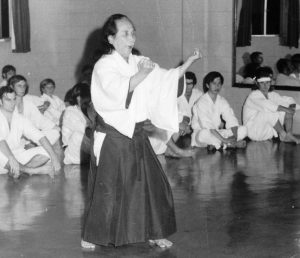
Teacher of Mas Oyama
Chōjun Miyagi (Sōke), who founded the Gōjū-ryū school of karate, a direct root of Kyokushin Karate (Mas Oyama was 7th dan in Gōjū-ryū), emphasized the importance of correct breathing while practicing karate and created the breathing exercise known as Ibuki in Karate, of which there are two types;
1. Yō – Ibuki which is employed as a training method and is a strong hissing sound which aids in dynamic tension training. Think Sanchin Kata.
2. In – Ibuki that is used in combat or while training, and is nasal in nature.
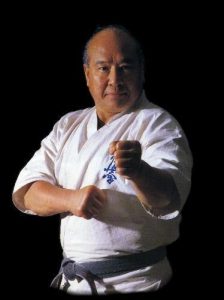
The combination of these breathing techniques promotes rejuvenation of energy and insures the body is exercised internally and externally. The goal is to consciously control breathing to unite the mind and body, activate the internal organs and to reach a state of total awareness.
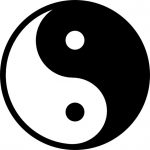

In-yō is the Japanese translation of Chinese Yin and Yang (陰陽). In Chinese philosophy, yin and yang (also yīnyáng – “dark—bright”) describe how seemingly opposite or contrary forces may actually be complementary, interconnected, and interdependent in the natural world, and how they may give rise to each other as they interrelate to one another. Hence you can see how this relates to the two different breathing techniques mentioned above.
Yō Ibuki
Is the hard style of breathing, a noisy breathing technique, with the aim of absorbing any opposing force; it is made with a long exhalation and ends with a short breath and voiced.
This technique is the channel through which the Hara (Tanden – pronounced dan-ten in Chinese) connects the spirit to the body, through Ki (internal energy). This technique serves to contract the muscles of the body in a single moment and is able to absorb a blow without suffering much harm, or at least a small part. This contraction, which takes place through the Yō ibuki breathing, contraction is called kime.
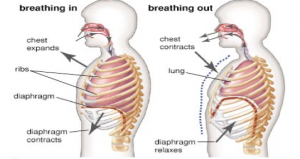 Yō ibuki (the “heavy” breathing method used in Sanchin and other kata) is not actually forced, as some people may describe it. As forced breathing would indicate you’re using the throat to throttle the airflow.
Yō ibuki (the “heavy” breathing method used in Sanchin and other kata) is not actually forced, as some people may describe it. As forced breathing would indicate you’re using the throat to throttle the airflow.
You are not to constrict the airflow or throat muscles. Instead, Yō ibuki is the measured but powerful controlled pressure of the abdomen. Heavy abdominal breathing, concentrating in collapsing your diaphragm (and thus your lungs) down instead of inflating them outwards (the breathing movement should be seen in your lower abdomen, not in your ribcage), then breath out by slowly contracting (with or without tension) the abdominal wall (like a stomach vacuum but without holding your breath), which will then push the diaphragm and lungs back up, compressing them and pushing the air out again.
This contraction of the abdominal muscles also pulls the ribcage and hips a bit together, and aids in the development of correct posture for sanchin dachi (gluteal and abdominal muscles contracted, without excessive pelvic tilt caused by using only the glutes and hip flexors).
Alternatively, use Ibuki when blocking a strike or delivering a strike, exhale with force and kiai – or shout. Observe weight lifting training or competition or other martial arts training and you will see that they also use this form of breathing. Weight lifters shout as they exhale, pushing heavy weights. Many athletes, including baseball and football players, even tennis players grunt, groan, or shout during practice or competition. They have been trained to realize that forceful exhaling makes their effort more effective and their body stronger.
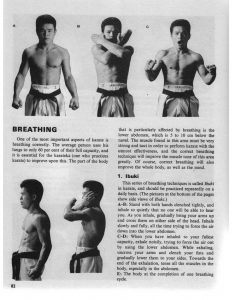
Nogare (In – Ibuki)
or “Slow/Soft Breathing”, is the soft but firm type of breathing which starts from deep within the abdomen. This is similar to the type of breathing which is practiced in Yoga and Zen meditation, and is usually directed towards spiritual and meditative matters when practiced. This is the normal way a baby breathes. If you watch a baby breathing it will naturally breath from the stomach. It is only when we get older that we “learn” to breathe from our chest, more shallow. The goal is to return to the “baby breath”.
Nogare Breathing:
- Stand straight up with the feet shoulder width apart, and with the arms hanging relaxed at the sides.
- Take a deep breath in through the nose and raise the arms up to chest level keeping the hands open.
- Bring the hands alongside the chest and force air into the abdomen. Set the breath in the lower abdomen for a moment.
- With the tongue relaxed behind the upper teeth, exhale slowly.
- Maintain the tongue behind the upper teeth to help to quiet the breathing.
- This is repeated several times until one’s breath is calm and one’s heartbeat is pacified.
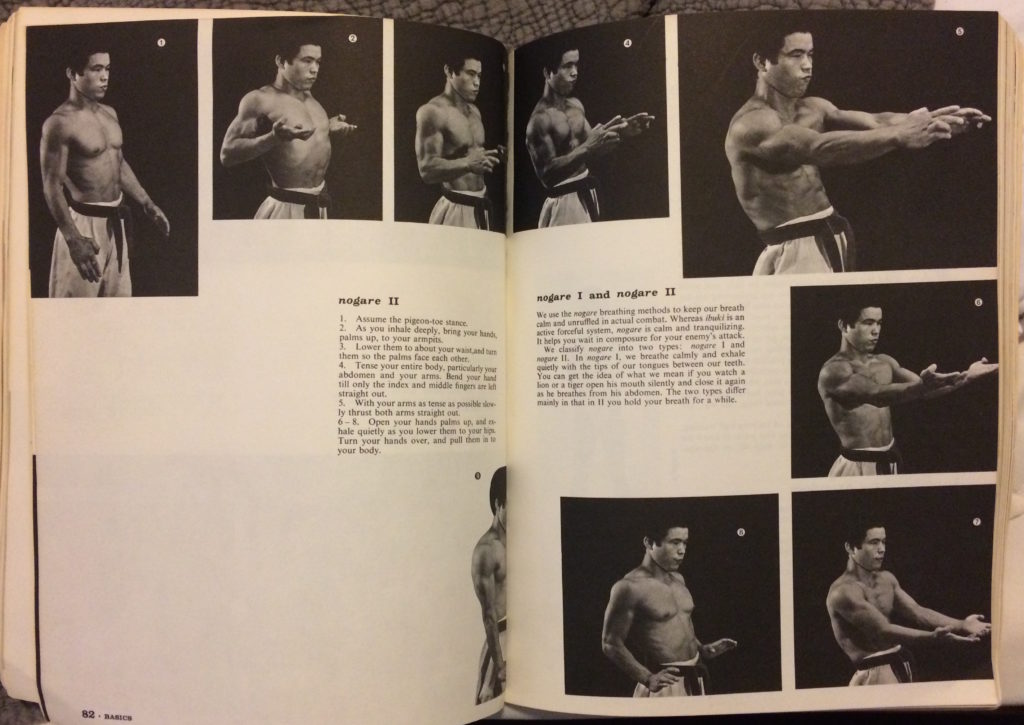
This is an exceptional skill for any Karateka to cultivate, especially the novice who will become overwhelmed with the lack of air from not breathing within the movement, which can take years to learn.
Nogare is also known as “combat breathing“. Nogare should be used during free fighting.
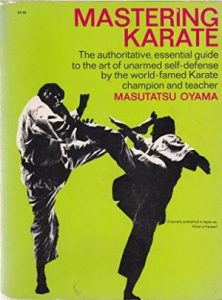
By breathing slowly the lungs fill more deeply, without tiring out, and by pausing we allow the air in our lungs to fall still for the crucial time for Osmosis to take place.
There are many benefits of both forms of ibuki, but the second is definetly easier to learn and perhaps more beneficial to your training and health long term.
To experience the benefits of simple Ibuki first hand, try breathing in slowly and out sharply as you strike a pad. It is easy to see the benefits of sharp outward breaths when striking. Or the controlled breathing of Nogare to slow your heart rate.
Today, due to scientific research, we see the benefits of breath as it relates to stress, anxiety and sports performance. People like Wim Hoff have brought breathing techniques to the forefront and scrutinized under laboratory testing to see the amazing documented results.
No longer just a “theory”. It is a proven measure of athleticism and mind/body control.
Osu!
https://youtu.be/XHIQ-QGczE8

Ibuki means to “force the breathe”
I wonder whether Ibuki is in fact the same or related to “Breath of Fire” (Agni Pran) which is one of the foundational breath techniques used in the practice of Kundalini Yoga. As far as I know them, in doing BOF we push the navel, (lower) abdomen or Hara inward, just like the case with Ibuki. The difference as far as I can see is the frequency: BOF normally executed at a much higher speed. In other words: Ibuki takes much longer in 1 cycle than BOF. But this is only the physical thing. I wonder if both have the… Read more »
Enlightening post
Oyama was held 4 dan in goju + 4dan in shotokan & He come from korea with Kempo…& Yamguchi doing gojukai…
Excellent post. Thanks.
Where did you get that Oyama was a 7th dan in Goju Ryu and that Yamaguchi was his teacher??